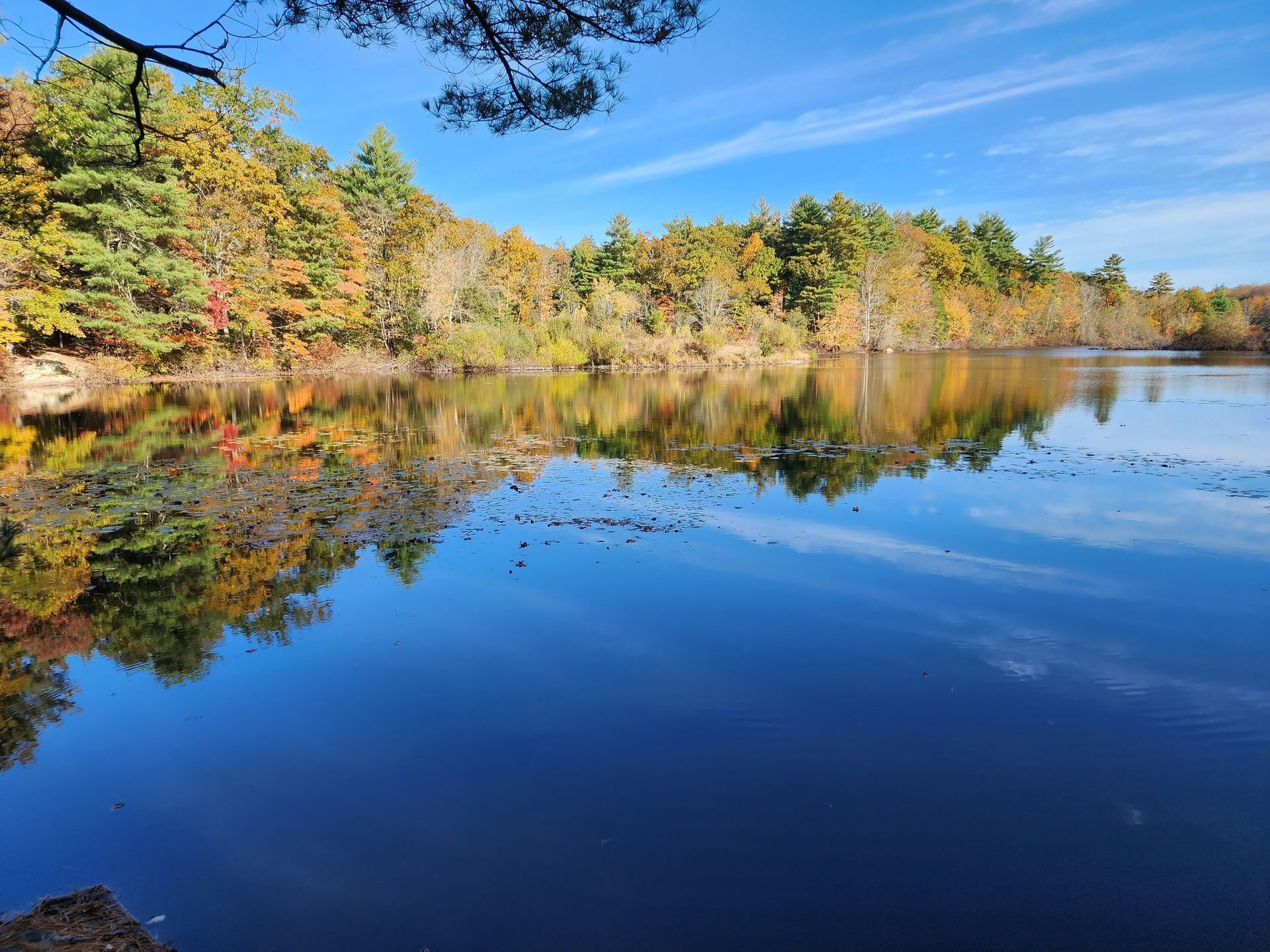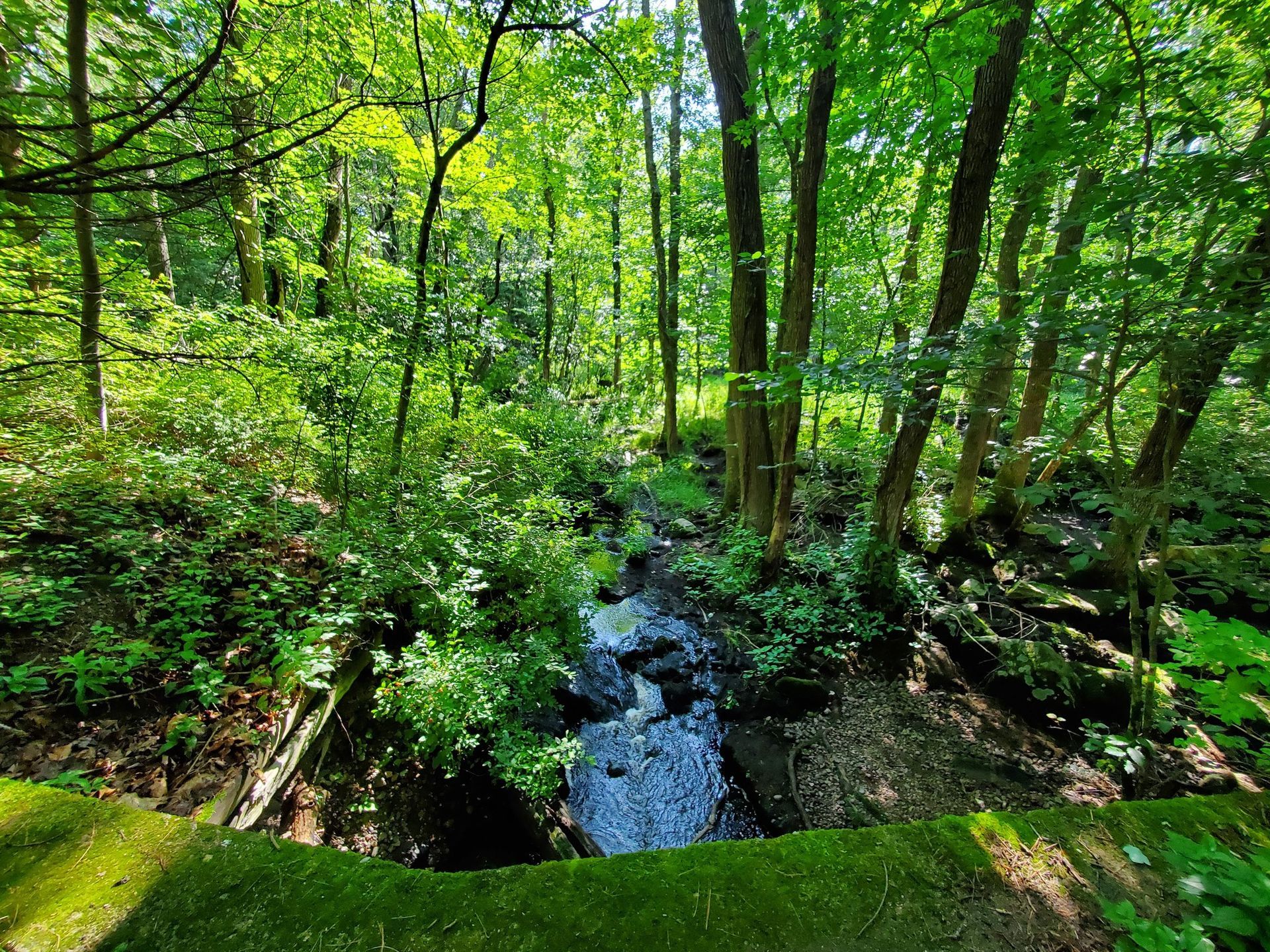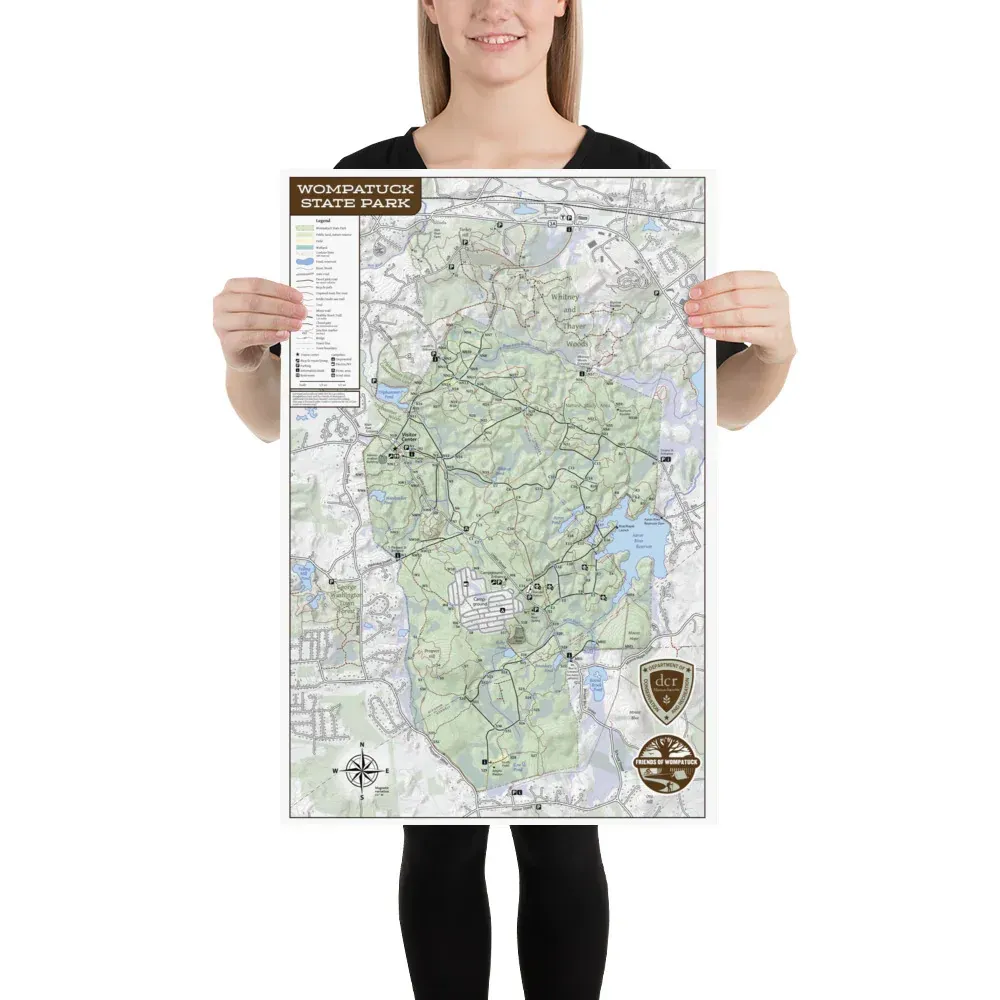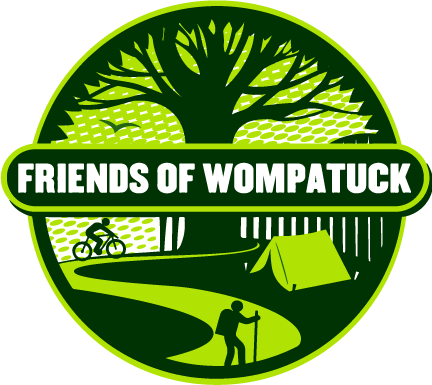Overview:
Managed by DCR
Wompatuck State Park is managed by the Massachusetts Department of Conservation and Recreation (DCR). Please visit their website to learn more - as well as make campground reservations.
The park spans 3,526 acres across the towns of Hingham, Cohasset, Norwell, and Scituate. It is comprised of forest, fields, streams, ponds, and a reservoir. It has a campground with 267 campsites, 12 miles of non-motorized roads, and over 40 miles of forest trails.
Learn More:
The History of Wompatuck State Park
This land that we call Wompatuck State Park was originally the property of the Native American chief Josiah Wompatuck. In 1655 he deeded the land we now call Hingham so that others could enjoy the land as he did.
In the 1700s early settlers and ship captains held title to the area, but the land was never extensively developed. The tall trees were used for masts and stone walls were built to denote survey and boundary lines.
During the 1800s, the land was used by the local residents. Families maintained woodlots to heat their homes. The streams powered Stockbridge Mill, which was used to make shingles. The farmers used the fields to graze their horses, sheep, and oxen. Water from Mt. Blue Spring was commercially bottled.When the Civil War broke out all the local men were swept into the fight. Many never returned. In their absence, the land was not utilized and the forest started to reclaim it.
In 1941, the U.S. Navy acquired from private landowners all of the property in order to expand the already existing Hingham Naval Ammunitions Depot. This area was known as the Cohasset Annex. Many cement bunkers were constructed and the area became a huge ammunitions storage depot. During World War II the Depot was the main ammunition supply for the North Atlantic naval forces. When World War II ended, this area reverted to maintenance status only. It was reactivated for the Korean conflict and once again went into full military operation. Explosives such as TNT loaded depth charges, bombs, fuses, projectiles, and cartridges were produced and stored along with the assembly of rocket motors.
This all came to an end in 1962. The U.S. Navy deactivated the Cohasset Annex and in 1963 the land was declared surplus by the Navy.
In 1966 the Commonwealth of Massachusetts took possession of the Cohasset Annex property. In 1967 the Massachusetts Department of Natural Resources purchased the 3496 acres to convert it to a public park.
In 1969 the park opened for limited outdoor recreational use, and in 1973 it was dedicated as Wompatuck State Park.
In 1986 the Park acquired an additional 600 acres from the government.
On January 1, 2004, a 125 acre parcel off of Leavitt Street was added to the park.
Approximately 100,000 people visit the park each year. Approximately 400 campsites are open from late spring to early autumn. Campers may choose from an extensive array of trails for biking, hiking, horseback riding, and ski touring. There are ponds for fishing, and hunting is permitted in season.
Much of the park is undeveloped and is heavily wooded. It has stands of White Atlantic cedar, American holly, chestnut oak, shag bark hickory, mountain laurel, pink dogwood, white pine, American Beech, and hemlock, some estimated to be 175 years old. Wildflowers and flowering shrubs also grow in abundance. Among the most common are Swamp Azalea, Solomon's Seal, While Geranium, ladies slipper, and Sheep Laurel.
Land and water creatures abound in the park. Common species include: muskrat, raccoon, cottontail rabbit, skunk, painted turtle, bullfrog, coyote, deer, bobcat, fisher cat, red & grey fox, yellow spotted salamander, yellow spotted turtle, box turtle, woodcock, bass, pickerel and sunfish. There are over 250 bird species in the park, including : blue jay, great blue heron, goss hawk, red tail hawk, yellow warbler, ruffed grouse, and quail.
This park is the site of the Burbank Boulder. This rock, a remnant of the glacial period, balances itself at three points equally distant from each other. Also, the park contains the highest point in Hingham: Prospect Hill.
Wompatuck State Park welcomes everyone. Stop in the Visitor Center to see more. As always, let's all help to maintain and preserve this park by not littering and treating this natural area with care.
Interested in Helping?
Then PLEASE Consider Joining , Volunteering, or Donating Today!
THANK YOU!

Shop the new FOW Store!
Help support the Friends of Wompatuck (FOW) as we strive to aid & improve the park we all know & love so well! Order items & have them shipped directly to you. Shop now!
















